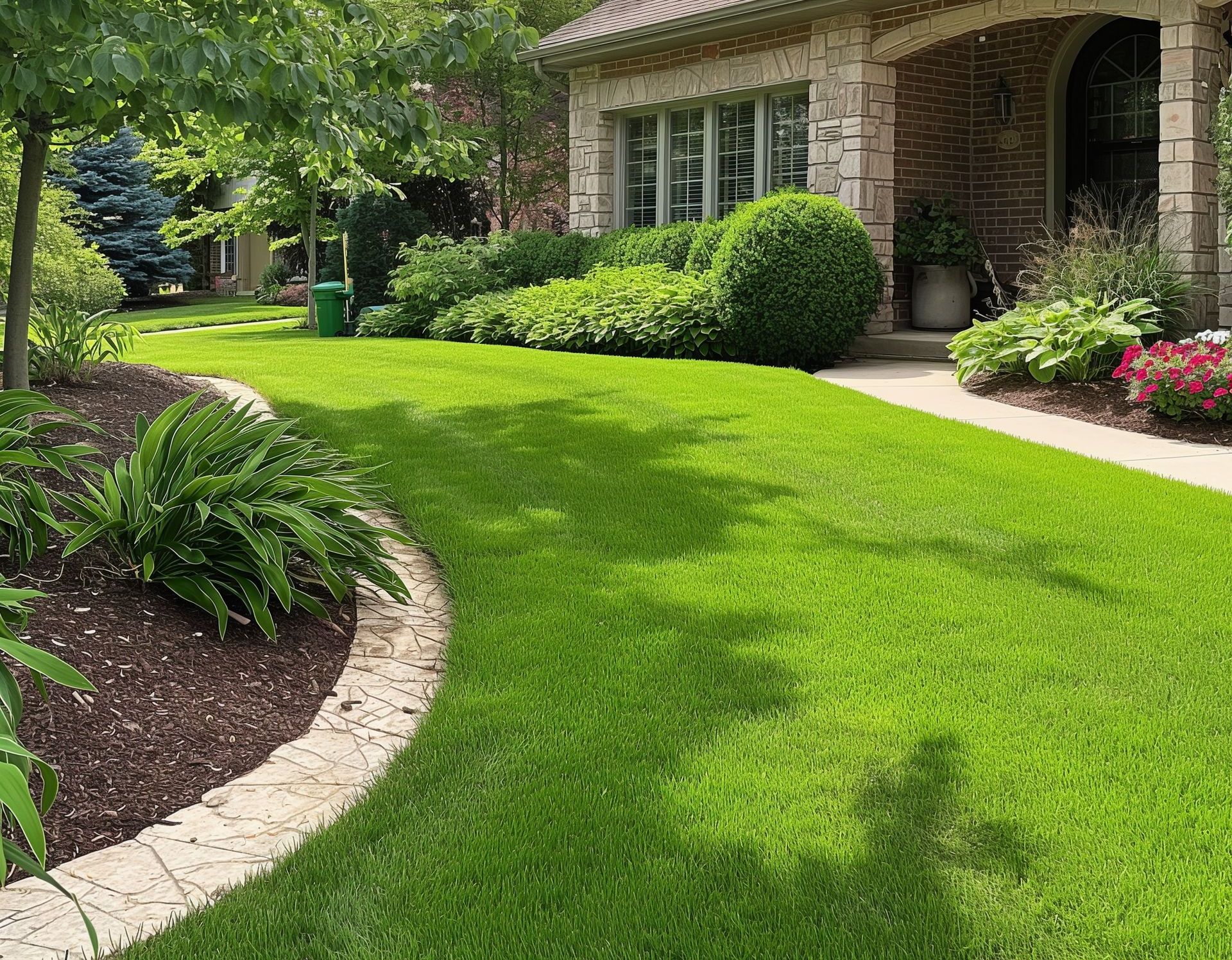Lifestyle
How to Maintain a Healthy and Beautiful Lawn: Best Practices and Tips

Importance of Lawn Care
A properly tended lawn not only boosts the visual charm of your residence but also increases its total worth. A beautifully cared-for lawn provides a safe and enjoyable outdoor space for family and friends to gather, play, and relax. In addition to offering social and aesthetic benefits, proper lawn care contributes significantly to environmental health. A healthy lawn helps prevent soil erosion, improves air quality by trapping dust and particles, and provides a habitat for beneficial insects and small wildlife. For those looking into broader landscape management, seeking professional services for tree removal near me can be a great addition to your lawn care regimen.
Furthermore, investing time and effort into regular lawn maintenance can lead to long-term savings on water and chemical treatments. Lawns that are well cared for tend to be more resilient to drought and pest infestations, reducing the need for costly interventions. Overall, consistent lawn care serves as a proactive approach to preserving the health and beauty of your outdoor space.
Soil Health and Preparation
The foundation of a thriving lawn starts with healthy soil. Performing a soil test is vital to ascertain its pH and nutrient concentrations, which are pivotal factors for plant development. Soil that is overly acidic or alkaline can impede nutrient uptake, leading to compromised grass vitality. Once you understand your soil’s condition, it’s time to amend it with organic matter like compost. Adding compost improves soil structure, fertility, and moisture retention, creating an ideal environment for grassroots to develop.
Steps for Soil Preparation:
- Conduct a soil test to determine pH balance and nutrient content.
- Enhance the soil quality by incorporating compost or alternative organic materials.
- Aerate the soil to improve air and water movement, which encourages root growth.
- Level the soil to eliminate any low spots and prepare it for seeding or sodding.
Choosing the Right Grass
Choosing the appropriate grass type for your region and climate is essential for a resilient and low-maintenance lawn. Warm-season grasses like Bermuda, Zoysia, and St. Augustine thrive in hot climates, while cool-season grasses like Fescue, Kentucky Bluegrass, and Ryegrass are better suited for cooler climates. The choice of grass significantly impacts how much care your lawn will need, so it’s advisable to research the best types of grass for your particular region. Opting for a grass type that naturally thrives in your climate can save you time, effort, and resources needed for maintenance.
Watering Techniques
Properly watering your lawn is vital for its well-being and endurance. Specialists advise watering in the early morning to reduce evaporation and enable the grass to dry before nightfall, thereby thwarting fungal infections. Employing deep, spaced-out watering methods prompts the growth of deeper grass roots, enhancing your lawn’s resilience to drought. Several studies have demonstrated that adhering to proper watering practices not only conserves water but also guarantees luxuriant green grass all year round.
Best Practices for Watering:
- Water early in the morning to reduce evaporation and maximize absorption.
- Water deeply but infrequently to promote deep root growth and plant resilience.
- Avoid overwatering since excess moisture can lead to fungal diseases and nutrient leaching.
Mowing Strategies
Mowing stands as a cornerstone of lawn maintenance, significantly shaping the health and look of your grass. Regular mowing is essential to uphold a uniform height, while trimming only up to one-third of the grass blade at each session minimizes stress on the grass, thereby decreasing vulnerability to pests and diseases. Maintaining sharp mower blades prevents tearing and fosters neat cuts. Furthermore, diversifying mowing patterns on each occasion can deter soil compaction and stimulate upright growth in grass blades.
Mowing Tips:
- Keep mower blades sharp to guarantee clean cuts and reduce plant stress.
- Follow the one-third rule: cut no more than one-third of the grass blade at a time.
- Vary your mowing pattern to prevent soil compaction and encourage upright growth.
Fertilization
Fertilization is vital to replenish essential nutrients required for robust grass growth. Select a balanced fertilizer suitable for your grass variety and tailored to the findings of your soil analysis. Applying a slow-release fertilizer can offer a steady supply of nutrients over time, which helps avoid the risk of over-fertilization and minimizes environmental runoff. Proper fertilization ensures that your lawn remains lush, green, and healthy throughout the growing season.
Dealing with Pests
Proper lawn maintenance practices, such as proper mowing, watering, and fertilization, help naturally deter pests. However, if pest problems do arise, it is crucial to identify the type of pest before choosing a treatment method. Integrated Pest Management (IPM) is a holistic approach that combines biological, cultural, and chemical practices to manage pest populations effectively while minimizing environmental impact. By integrating various control practices, IPM aims to reduce the reliance on chemical treatments.
Steps in Integrated Pest Management:
- Identify the pest and understand its life cycle to choose the most effective control method.
- Implement cultural practices such as proper aeration and fertilization to create an unfavorable environment for pests.
- Use biological controls like beneficial insects that naturally reduce pest populations.
- Apply chemical treatments as a last resort, targeting specific pests to minimize collateral damage.
Seasonal Care Tips
Matching your lawn care routine according to the seasons is crucial for ensuring a healthy and beautiful yard year-round. In spring and fall, focus on aeration and overseeding to promote healthy grass growth and fill in any bare patches. During summer, mow your lawn regularly and increase watering to help the grass cope with heat stress. Keeping the lawn clear of debris in winter will prevent diseases and rodent activity, ensuring your lawn emerges healthy in the spring.
Seasonal Adjustments:
- Spring: Aerate the soil and overseed to encourage new growth and repair damage.
- Summer: Mow regularly, water deeply, and maintain consistent care to combat heat stress.
- Fall: Aerate the soil, overseed, and prepare the lawn for winter dormancy.
- Winter: Clear debris, reduce foot traffic, and monitor for signs of disease or pest activity.


